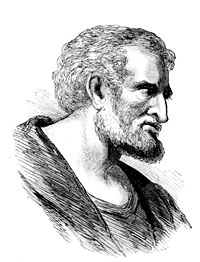 I have been asked to lead our small group Bible study, and have chosen to study 1 Peter. This short letter is often overlooked, as much time in the New Testament is spent on the Gospels or Paul’s epistles. But 1 Peter is a very rich resource, and I’m looking forward to studying it in some depth.
I have been asked to lead our small group Bible study, and have chosen to study 1 Peter. This short letter is often overlooked, as much time in the New Testament is spent on the Gospels or Paul’s epistles. But 1 Peter is a very rich resource, and I’m looking forward to studying it in some depth.
I thought I would share some insights from studying this book on the blog. I am not sure how well this medium will serve such a study, and I may experiment with some different formats and see how it plays out. I often find by writing my understanding of a topic deepens substantially, and it is my hope that any notes I post here will be helpful both to you as well as myself.
I am currently using the New Living Translation (which, unlike the Living Bible is not a paraphrase, but rather a thought for thought translation — see this for different philosophies and approaches to translating the original Scriptures). I will be referencing other translations from time to time as the need arises.
So let’s get started, and see where this goes.
- 1:1a This letter is from Peter, an apostle of Jesus Christ.
What seems at first a straightforward attribution proves not nearly as simple as it first appears. We are drawn to think of Peter, one of the 12 apostles chosen by Jesus to be his immediate followers, and spoken of often throughout the Gospels and the book of Acts.
When examining a piece of ancient literature, there are a host of tests and methods to assess its veracity. In general terms, these are categorized as internal and external sources. External sources refer to such things as archaeological evidence, references to a given work in other ancient works, and consistency of the message with its historical and cultural context. Internal evidence would refer to the specific writing style, internal consistency, stylistic similarity to other works by the same author, and in the case of Scripture, its harmony with the established teachings and traditions of the Christian faith.
It turns out that letters or Gospels claiming to be written by an apostle were a dime a dozen in the first few centuries after the death of Christ. The early Christian church, believing that the true gospel and true faith had been given to the apostles by Jesus, who then transmitted the same faith and truth to their immediate followers and disciples, placed great emphasis on ascertaining that any given letter or literary work was in fact the work of the apostles or their immediate delegates. The body of Scripture, which we refer to as the canon, represents the culmination of this verification and culling process. Although modern skeptics seek to portray this as the product of a dogmatic declaration by church leaders and bishops, designed to entrench them in power and exclude equally legitimate interpretations of Christianity by those out of power.
While this narrative has popular appeal in our modern culture, it quite simply does not mesh with historical fact. We have a great deal of literary evidence regarding the life and belief system of the early Christian church, embodied in the works of water known as the Apostolic or Church Fathers. We know from this large and diverse body of literature a great deal about what the early church taught and believed, from sources of extraordinary variety, both geographically and culturally.
It is clear from such sources that the core teachings of Christianity were not simply invented in the fourth century or later, but in fact were present from the very outset, taught by those who themselves were often disciples of the apostles, or disciples of those disciples. Furthermore, we have frequent early citations of Scripture which attest to manuscripts dating back virtually to their primary sources, themselves no longer in existence and thus undiscoverable archaeologically.
We know from these sources, as well as ancient manuscripts of Scripture itself, that most of the New Testament canon was universally accepted as apostolic, and had its origins from the very earliest days of the Christian faith. This body includes the four Gospels, the book of Acts, Paul’s letters, and 1 Peter. There was some dispute about a minority of the books in the New Testament, especially 2 Peter, Jude, James, Revelation, and 2nd and 3rd John, and some time passed before they were verified and accepted as well as part of the body of inspired Scripture.
The testimony of such sources is compelling that 1 Peter was in fact a letter by the apostle Peter, likely within 2 years of his martyrdom in Rome under Nero in 64 AD. Some scholars have disputed his authorship, asserting that the classical Greek style could not have been written by an unschooled Aramaic fisherman, and that the theology was too sophisticated and rather Pauline in nature. But Peter himself acknowledges the assistance of Silas, a Greek who was a companion of Paul and Timothy on their missionary journeys, and thus this objection seems easily overcome.
Pause and consider for a moment: what we have in this short letter are the thoughts, beliefs, and teachings of a man who accompanied Jesus throughout his earthly ministry, and if he is to be believed, witnessed the risen Christ after His resurrection. Whatever your opinion or convictions about the Christian faith, this surely must be acknowledged as a remarkable historical document, and an invaluable asset to understand the teachings of Jesus and the convictions of his followers.
So that’s some background on this epistle — we’ll start diving into the content, anon.
